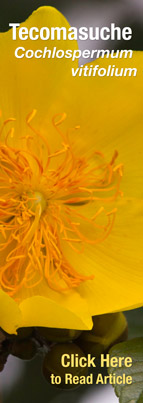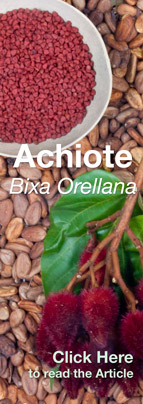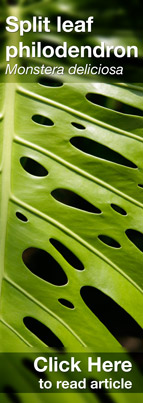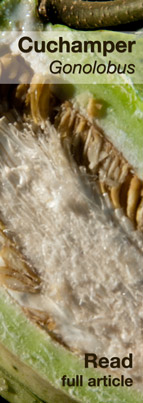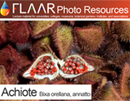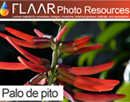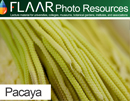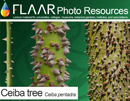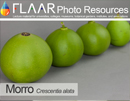When time and funding permit, each flower (each plant species) will have its own page, and its own PDF, and eventually its own PPT so that professors and students have plenty of material on Guatemala (and Honduras, etc) to study.
Heliconia adflexa, Coban, Guatemala, Hotel Monja Blanca, FLAAR, by Nicholas Hellmuth
This space is for flowers
we have recently found and photographed.
|
| Share
|
| Photos Chiranthodendron pentadactylon flower canac manitas Aztec cacao chocolate flavoring medicine |
|
Manitas, Canac, Chiranthodendron pentadactylon in Mesoamerica My initial interest in Canac was because I noticed that the pod had the same kind of ridges as do the pods of cacao and pataxte. Subsequently I learned the similarity may result because they are in the same family Stercuiaceae. 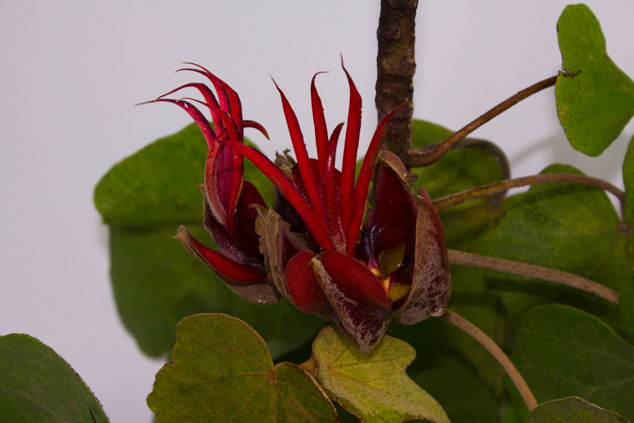 Manitas tree; Mano de Mico; Canac Chiranthodendron pentadactylon; red flower Manitas tree; Mano de Mico; Canac Chiranthodendron pentadactylon; red flowerNext I was attracted to the bizarre flower, probably one of the most unique and photogenic flowers in Guatemala. Then, a year later, I noticed that these same flowers were a well known flavoring for cacao for the 16th century Aztec. And then (December 2011), I noticed that the trunk has bumps on it, albeit not as perfectly conical as on a Ceiba pentandra. However a major issue with using photographs from the Internet is that many have an incorrect species attribution. The photo from a botanical web site showed a raised spot pattern on the trunk, but no individual protrubences. I will have to find the trees and inspect them in person. 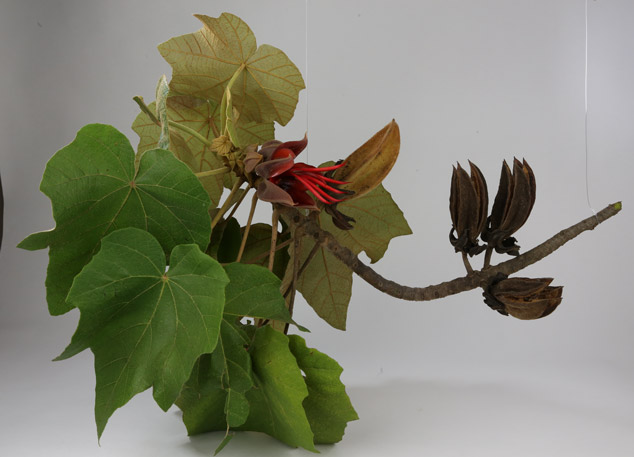 Manitas tree; Canac; Chiranthodendron pentadactylon; red flower Manitas tree; Canac; Chiranthodendron pentadactylon; red flowerBut once the tree was in front of me, the bizarre flowers so totally captivated my attention that I never even remembered to look at the trunk! Almost every botanical web site and all the popular web sites either just show photos of the hand-shaped flowers or repeat what was said in earlier publications. I have not found a really helpful ethnobotanical study of this tree yet, but we have listed all the books which mention Chiranthodendron pentadactylon in Mexico and Guatemala. 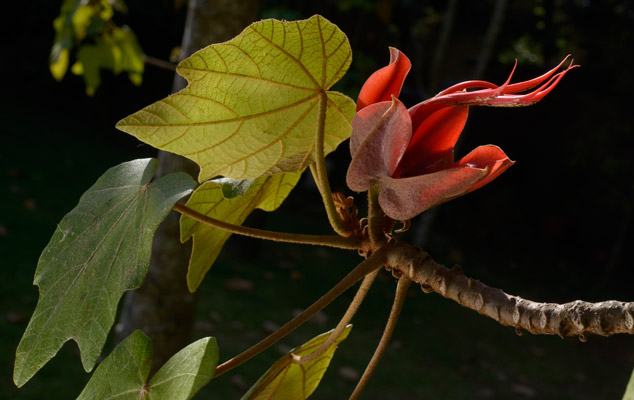 Manitas tree; Canac; Chiranthodendron pentadactylon; red flower Manitas tree; Canac; Chiranthodendron pentadactylon; red flowerSince there are over 400 plants on our list of utilitarian plants of the Maya, I am constantly moving my interest from one plant to another. But several aspects of Chiranthodendron pentadactylon have caused me to focus on learning about this tree and its remarkable flowers.
Practical uses, other than symbolic The leaves of this tree are used to wrap tamales, but seemingly more than just to wrap them; the leaves impart a flavor. Actually the leaves themselves can evidently be eaten.  Árbol de Manitas; Canac; Chiranthodendron pentadactylon; red flower Árbol de Manitas; Canac; Chiranthodendron pentadactylon; red flowerIn the market of Coban, Alta Verapaz, two of the largest vendors of medicinal plants had giant sacks of “manitas” flowers. This large quantity of these flowers suggests that they are readily available somewhere in the wild (I doubt they are cultivated). I have seen large sacks of manitas flowers in the major markets in Guatemala City as well. The fact that each market has so many flowers suggests that these flowers are quite common. The bark can be used to make rope (GlobalTrees.org). List of species of Chiranthodendron pentadactylon in the Mesoamerican area There is only one species in the genus Chiranthodendron. Parker places Chiranthodendron pentadactylon in the family of Sterculiaceae, which is the chocolate and cola family (Parker 2008:887). But others place it in the family: Malvaceae, subfamily: Bombacoideae (remember the bumps on the trunk). Some synonyms include:
Common names The generic name - Chiranthodendron - is a combination of Greek words meaning "hand-flower-tree." Larreátegui notes that this was the name used by the Spanish botanists in Sessé's expedition, which studied the tree in 1787. The trivial name pentadactylon means "five-fingered." The tree flowers in winter, when the branches are otherwise bare. It was well-known long before the Spanish arrived in the 1500s; in the Aztec language Nahuatl it is called Macpalxochicuahuitl ("hand-flower-tree"). In Spanish it is called Árbol de las manitas ("tree of the little hands"), flor de manita ("flower of the little hand"), and manita or mano de león ("little hand, or hand, of a lion"); and in English, the hand-flower tree or Mexican hand plant (Hortus Third). (www.sil.si.edu/digitalcollections/nhrarebooks/larreategui/larreategui-introduction.html). 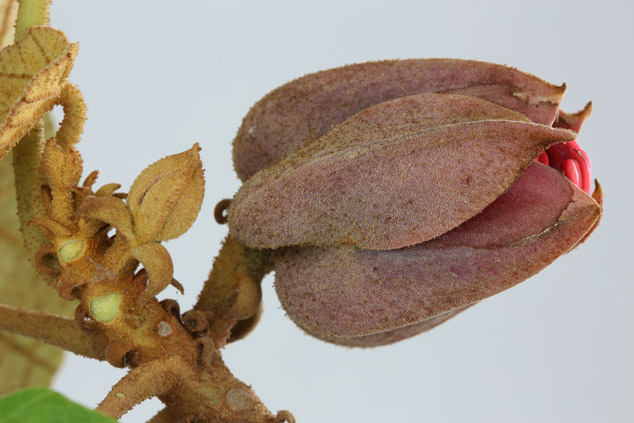 Manitas tree; Canac; Majagua (in Zacapa); Chiranthodendron pentadactylon; red flower Manitas tree; Canac; Majagua (in Zacapa); Chiranthodendron pentadactylon; red flowerWe found that yes, the tree does flower in the cold months of winter, but the branches were not bare whatsoever. There were plenty of leaves on the trees. Common Names: English: Devil's Hand Tree , Monkey´s Hand Tree, Hand Flower Tree. Spanish : árbol de la manita, árbol de las manitas, camxóchitl, canac, canaco, canague, huiahuonahua, lechillo, li-ma-ne-shmu, macpalxochicuáhuitl, macpalxóchitl, majagua, mano de dragón, mano de león, mano de mico, mapasúchil, mora, palo de mecate, palo liso, tayuyo, teyacua, teyeque. www.globaltrees.org/tp_devilshand.html Habitat of Chiranthodendron pentadactylon in the Mesoamerican area This tree seems to be more common in some areas of Highland Mexico and rather rare in Guatemala. In Guatemala it tends to occur in areas with pine such as near Sibinal, San Marcos. Indeed the name of the nearby volcano Tacana may be based on the name of the tree in Mam (Mayan language), though there are also two competing derivations Luis Villar notes that it occurs in forests between 2000 and 3000 meters in the Guatemalan-Mexican border area (2005:72). The manitas trees that I was led to were at least 2000 meters, near Palestina area above Lake Atitlan. Tecpan and San Pedro Sacatepequez, San Marcos are other places to look. Parker lists the Volcan de Agua (where it is called Tayuyo) and Volcan de Acatenango (2008:887). Bibliography on Chiranthodendron pentadactylonFor a bibliography on Chiranthodendron pentadactylon we have a separate web page. First posted March 11, 2013. |
Parque Nacional Yaxha, Nakum and Naranjo
Carnivorous Plants
Plants of Municipio de Livingston, Izabal
- Acrostichum danaeifolium, giant leather ferns
- Bellucia Pentamera
- Bibliography on Grias cauliflora
- Bibliography on Licania platypus
- Bibliography on Mangle negro (Avicennia germinans) L.
- Bibliography on Montriacardia arborescens
- Bibliography on Typha domingensis and Thypha latifolia
- Conocarpus erectus, white mangrove
- Edible Wetlands Plants, Hotel Tortugal
- Heliconia latispatha
- Heliconia wagneriana
- Manicaria saccifera Confra palm
- Neotropical trees of Guatemala need protection
- Nymphoides indica, waterlily flowers
- Pachira aquatica, zapoton
- Bibliography on Pithecellobium Mart., Neotropical trees of Mesoamerica
Ecosystems, Wetlands Aquatic Plants
Smartphone Camera Reviews
Bushes and small trees
Fungi and Lichens
Orchids
- Bibliography Bletia purpurea, aquatic orchid
- Bibliography, Epidendrum radicans
- Bibliography on Habenaria Orchids from Yaxha
- Bibliography, Lycaste virginalis var. alba.
- Bibliography, Macroclinium bicolor
- Bibliography, Prosthechea cochleata
- Bibliography Sobralia macrantha, Lirio de San Juan
- Bibliography, Sobralia xantholeuca
- Bibliography on Terrestrial shade orchids from Guatemala
- Bibliography on Terrestrial sunny orchids from Guatemala
Botanical Terms
Maya and Aztec flavorings for cacao, cocoa, chocolate
- Achiote, Bixa orellana
- Bibliography on Achiote, Bixa orellana
- Bibliography on Esquisúchil, Bourreria huanita
- Bourreria huanita
- Cassia grandis, bucut
- Chile Chocolate
- Chile Chocolate (Capsicum annuum var accuminatum)
- Chiranthodendron pentadactylon
- Cymbopetalum penduliflorum
- Guazuma ulmifolia
- Haematoxylum brasiletto
- Piper auritum, hoja santa
- Piper species
- Quararibea funebris
- Sterculia apetala, castaño
- Tagetes sp., Marigold
- Talauma, a variant of Magnolia
- Vanilla orchid
- Virola and nutmeg
Cacao, cocoa, chocolate
Consulting cacao & Theobroma species
Tobacco Ingredients of Aztec & Maya
Trees of Mesoamerica
- Bibliography on Acacia dolichostachya, Wild tamarind
- Bibliography, Bellucia costaricensis
- Bibliography, Bucida buceras
- Bibliography on Coccoloba belizensis Standl.
- Bibliography on Cojoba sp. and Cojoba arborea
- Bibliography, Ficus.
- Bibliography on Haematoxylum campechianum and H. brasiletto
- Bibliography on Hibiscus pernambucensis
- Bibliography on Ipomea murucoides
- Bibliography on Lacmellea standleyi, lechemiel
- Bibliography on Leucaena leucocephala
- Bibliography on mangle rojo (Rhizophora mangle)
- Bibliography on Manzanillo, Alseis yucatanensis Standl.
- Bibliography on Matilisguate, Tabebuia rosea
- Mangrove swamp Trees
- Bibliography on Ruagea insignis
- Bibliography on Pterocarpus officinalis
Bombacaceae, Bombacoideae
Tropical Fruits of the Maya
- Avocado Hass
- Bibliography on Coloc, Talisia floresii
- Bibliography, Dichogamy of avocado species
- Bibliography on Guayo, Talisia olivaeformis
- Bibliography on Laetia thamnia, Bakelac
- Bibliography on Maracuyá, Passiflora quadrangularis L.
- Bibliography on Punica granatum L., Granada
- Cashew
- Cuajilote, Parmentiera aculeata
- Granada
- Guanabas and Annonas
- Guava, Guayaba, Psidium guajava L
- Introduction to Papaya
- Nance a fruit of prehispanic Guatemala
- Passion flowers and fruits
- Passion flower, giant fruit
- Talisia floresii, Sapindaceae
- Carica Papaya Bibliography
Tropical Nuts
Spices, condiments, food coloring
Medicinal Plants
- Aristolochia, The largest flower in Guatemala, Bibliography
- Asclepias curassavica, bibliography
- Bibliography on Ciricote, Cordia dodecandra
- Bibliography on Contrahierba, Dorstenia contrajerva
- Bibliography on Falso hibisco, Malvaviscus arboreus
- Bibliography on Huele de noche, Cestrum nocturnum
- Bibliography on Lirio araña, Hymenocallis littoralis
- Bibliography on Roble Prieto, Ehretia tinifolia
- Bibliography, Tithonia diversifolia
- Canak
- Calliandra general info
- Guava, Guayaba
- Magnolia and Taluma
- Mayan medicinal plants
- Piper
- Tecomasuche, Coclospermum vitifolium
- Bibliography on Sufricay, Malmea depressa
- Bibliography on Wigandia urens
Underutilized edible plants
Edible Plants of the Mayan World
- Acacia, subin, bullhorn acacia
- Bibliography, Annona muricata
- Bibliography, Annona purpurea
- Bibliography, Annona reticulata
- Bibliography on Chipilín, Crotalaria longirostrata
- Bibliography on Chirimoya, Annona squamosa
- Bernoullia flammea
- Canna indica, tamale wrap
- Cuchamper, Gonolobus
- Guava, Guayaba
- Bibliography, Gonobolus sp.
- Bibliography, Parmentiera aculeata
- Pacaya palm Chamaedorea tepejilote
- Split leaf philodendron, Monstera deliciosa
Plants and trees used to produce incense
Utilitarian Plants
- Bibliography, Acacia farnesiana
- Bibliography on Aechmea bromeliifolia
- Bibliography on Agave americana
- Bibliography, native Agave species from Guatemala
- Bibliography on Anthurium crassinervium (Jacq.) Schott
- Bibliography on Balsa, Ochroma pyramidale
- Bibliography on Bamboo, Guadua longifolia (E.Fourn) R.W.Pohl
- Bibliography, Crescentia alata
- Bibliography, Crescentia cujete
- Bibliography on Hule, Castilla elastica
- Blepharidium guatemalense, irayol blanco
- Crescentia alata, Crescentia cujete
- Tecomasuche, Coclospermum vitifolium
- Bibliography on Coxte, Colubrina arborescens
- Bibliography on Madre cacao, Gliricidia sepium
- Bibliography on Tillandsia usneoides

















